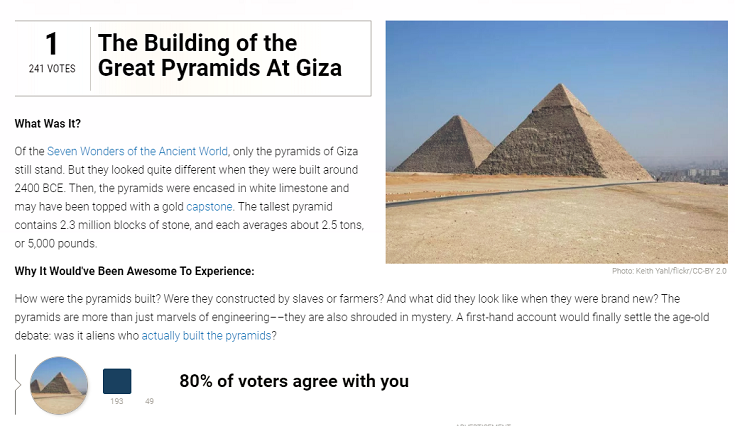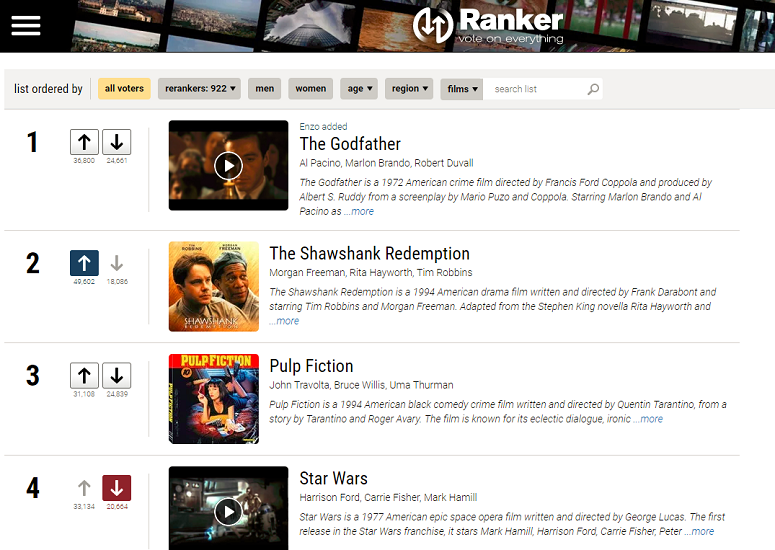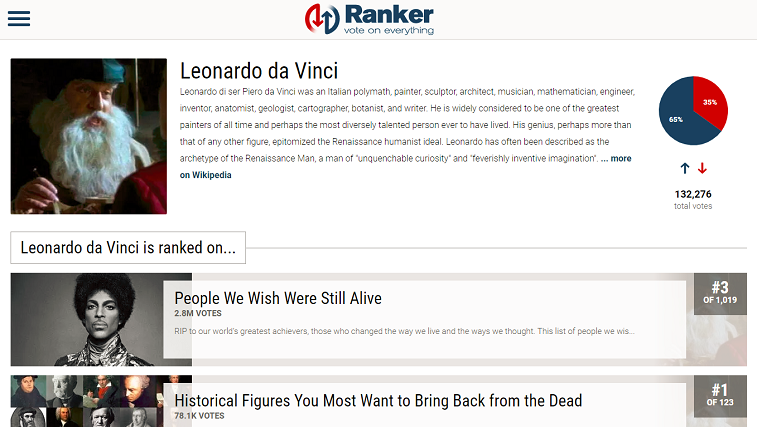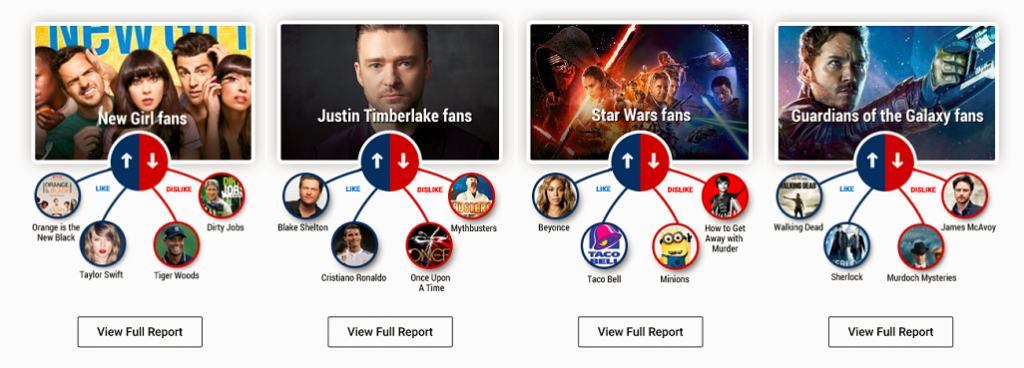Any SEO or webmaster who has ever had a website affected by a Google algorithm change – or feared being affected by one – has probably wished that they could find a way to make their website “algorithm-proof”.
Still, surely there’s no such thing as a website that’s never impacted by Google algorithms, right? As long as your site is indexed by Google, it’s at the mercy of the algorithms that Google uses to determine website ranking, all the more so if you happen to rely heavily on organic search traffic for your business.
The art – or science – of search engine optimization is about determining as best you can what those algorithms are looking for, and giving it to them.
Yet one website believes it has found the formula for making its content “Google algorithm-proof”. Ranker is a website made up of dynamic, crowdsourced lists that users can vote on, about everything from pop culture to geography, history to sports, celebrities to science.
And according to its CEO, Clark Benson, Ranker has never suffered a negative effect from a Google algorithm change, growing its traffic steadily without interruption over the course of eight and a half years.
Search Engine Watch caught up with Benson to find out Ranker’s secret to success, and whether there is a formula for creating an algorithm-proof website.
Rankings, not review sites
So what is Ranker, exactly?
“Ranker’s primary reason for being is to crowdsource anything that makes sense to rank,” says Benson. “Any topic that people are really interested in.
“The unique angle that we’ve pursued is that instead of having this being one 23-year-old blogger’s opinion of the best new TV shows of the year, or whatever it happens to be, we would have a dynamic list that visitors could vote on, potentially add items to, and re-rank.
“The end result is a very wisdom-of-crowds-based answer which is always changing and dynamically moving along as tastes change, and as more people vote on things.”
Voting on a list of ‘Historical events you most want to go back and see’ on Ranker
Lists have been a time-honored draw for magazines and other print media over the years, but it was when the internet came along that they really exploded – spawning dozens of list-oriented viral websites and the much-mocked listicle, which became a staple of online journalism. However, Benson – a self-described “lifelong list nerd” – was frustrated by the fact that these lists only ever represented one person’s opinion.
In a similar vein, he found review websites unhelpful, as user-generated reviews represented a single person’s subjective opinion in a format that wasn’t conducive to making a decision.
“Part of the reason to build Ranker was my frustration with review sites, because when I’m looking for an answer to something, like which TV show to watch, I don’t want to read a lot of text reviews.
“I also feel that in typical five-star rating systems, everything tends to be clustered around three and a half to four stars, so you don’t get any true granularity on what is best.”
In a world increasingly “cluttered with choices”, therefore, Benson was convinced that rankings were “the simplest way to dissect a choice in a category, without losing the credibility of the answer”. And so he built Ranker as a website where the wisdom of the crowd could determine the ultimate ranking for any list of items, on any topic.
The secret to Ranker’s SEO success: Content freshness
Since Ranker’s launch in 2009, the site has amassed more than 100,000 rankings across dozens of broad categories, encompassing almost any topic that people could have a passion for.
When the website first launched, however, it had very few resources, and Benson explains that he had to learn SEO from scratch in order to give the website a strong foundation.
Luckily, earning traffic was never a problem for the site, because the type of content published on Ranker was uniquely suited to catering to Google’s algorithms.
“We’ve never been hit by any algorithm changes – we’ve always grown our organic search traffic year over year over year, steadily, for the eight and a half years we’ve been live.
“You never exactly know what works in SEO, because Google doesn’t tell you what works, but I’ve always believed that the best intelligence on what to do comes from the public statements Google makes – their best practices.
“And one of the key factors that Google says is in their index is freshness of content. Content has a lifespan. In our case, because our rankings are dynamic and always changing – people are adding things to them, voting things up and down – this makes for perpetually fresh content.
“We have a lot of content that is six, seven, even eight years old that is still doing as well as it was years ago, and in some cases it’s even growing in traffic.”
One of Ranker’s most evergreen pieces of content is a list ranking the ‘Best Movies of All Time’ – which is more than 5,000 items long.
“Obviously that’s a topic that there’s a lot of passion and a lot of competition for [in search rankings]. And in the last few years, we’ve been on the top three or so results on Google for that term.
“We’ve watched that page just grow in rankings over the span of seven or eight years. I can only guess it’s because the page is always changing.”
User-curated content
At the time of writing this article, Ranker’s front page is currently spotlighting a list of best-dressed celebs at the 2018 Oscars, a best TV episode names ranking, and a list of possible game-changing deep space observations to be made by the Webb Telescope.
Anyone can add an item to a list on Ranker, although Ranker’s content is not purely user-generated. Ranker has an editorial team which is made up of people who, in Benson’s words, “have a mind for cataloging things” rather than people who specialize in writing a lot of prose.
Lists are typically started off by one of Ranker’s editors, and when a user wants to add a new item to a list, it’s cross-referenced with Ranker’s database, a huge data set made up of more than 28 million people, places and things. If the item isn’t found in the database, it’s added to a moderation queue.
Rather than UGC (user-generated content), therefore, Benson thinks of Ranker’s lists as something he terms UCC – user-curated content.

How did Ranker build such a huge data set? Beginning in 2007, a company called Metaweb ran an open source, collaborative knowledge base called Freebase, which contained data harvested from sources such as Wikipedia, the Notable Names Database, Fashion Model Directory and MusicBrainz, along with user-submitted wiki contributions.
This knowledge base made up a large part of Ranker’s data set. What’s interesting is that Freebase was later acquired by none other than Google – and is the foundation of Google’s Knowledge Graph.
Additionally, not every list on Ranker is crowdsourced or voted on. Some lists, such as Everyone Who Has Been Fired Or Resigned From The Trump Administration So Far, don’t make sense to have users voting on them, but are kept fresh with the addition of new items whenever the topic is in the news.
Can other websites do ‘Ranker SEO’?
Benson acknowledges that Ranker’s setup is fairly unique, and so it isn’t necessarily possible to emulate its success with SEO by trying to do the same thing – unless you just happen to have your own crowdsourced, user-curated list website, of course.
With that said, there are still some practical lessons that website owners, particularly publishers, can take away from Ranker’s success and apply to their own SEO strategy.
First and foremost: content freshness is king
As you’ve no doubt gathered by now, the freshness of Ranker’s content is probably the biggest contributing factor to its success in search. “We’re convinced that the dynamism of our content is what really lets it just grow and grow and grow in search traffic,” says Benson.
“While our approach is somewhat unique to the way Ranker works – we have a bespoke CMS that makes lists out of datasets – I’m positive that there are other ways to apply this kind of thinking.”
To put content freshness front and center of your content marketing efforts, make sure that your publication or blog is well-stocked with evergreen content. For those articles or posts that are more time-sensitive, you can still publish a refreshed version, or look for an up-to-date spin to put on the old content, for example linking it in with current events.
According to research by Moz, other factors which can contribute to a positive “freshness” score for your website as a whole include:
- Changes made to the core content of your website (as opposed to peripheral elements like JavaScript, comments, ads and navigation)
- Frequency of new page creation
- Rate of new link growth (an increase in links pointing back to your site or page)
- Links from other fresh websites, which have the ability to transfer their “fresh value” (Justin Briggs dubbed this quality “FreshRank” in 2011)
Internal links trump external links
Other than content freshness, Benson attributes Ranker’s SEO success to one other big factor: its intricate network of internal links, which Benson believes are far more valuable to SEO than an impressive backlink profile.
“I think a lot of people who are new to SEO focus too much on trying to get outside links, versus optimizing their own internal infrastructure,” he says.
“We have a very broad site with millions of pages – not just lists, but a page for every item that’s included in a list on Ranker, showing you where it ranks on all of our different lists.”
The Ranker page for Leonardo da Vinci
“We made the mistake early on of leaving all of those pages open to Google’s index, and we learned over time that some of them are very thin, content-wise. New links are added to them, but they’re thin pages. So we quickly adopted a strategy of noindexing the thinner pages on our site – so they have utility, but they don’t necessarily have search utility.
“We’ve really focused a lot on internal link structure and on interlinking our content in a very intelligent and vertical-driven, page-optimized way. We’ve put a lot of engineering and product resources towards building a robust internal link structure that can also change as pages become more valuable in search.
“Outside links are very important, but they’re increasingly difficult to get. If you have good, unique content, and a strong internal link structure, I think you can get by with far fewer backlinks. Ranker has a lot of backlinks – we’re a big site – but we’ve never tactically gone out to build backlinks. And we get more than 30 million organic search visits per month.”
Think about how your content will appear to searchers
Benson emphasizes the importance of paying attention to basic on-site optimization like crafting good title tags and meta descriptions. These elements dictate how your website appears in the SERP to users when they search, and so will form the first impressions of your content.
“When it comes to creating new content, our editorial team definitely focuses on best practice with regards to title tags and meta descriptions – the basic stuff still applies,” says Benson. “Anyone doing editorial still needs to think about your content from the lens of the searcher.”
Optimizing for Google’s rich results and using Schema.org markup are additional ways that website owners can make sure that their website listing appears as attractive as possible to a searcher encountering it on the SERP.
The future is psychographic
What plans does Benson have for the future of Ranker? Up to now, the site has been concentrating mostly on search and social distribution (Facebook is another big source of organic traffic), but are now beginning to focus more on ad sales, media tie-ins and getting the brand name out there.
“We’re always focused on growing traffic, and we’re certainly investing a lot more into our brand,” says Benson.
However, the most exciting future project for Ranker is something called Ranker Insights – a psychographic interests platform which makes use of Ranker’s thousands of data points on what people are interested in and like to vote on.
Drawing connections between people’s interests on Ranker Insights
Big data on anything is extremely valuable in marketing, but big data on the things that people like is near enough invaluable – particularly in a world where psychographics (classifying people according to their attitudes, aspirations, and other aspects of their psychology) are increasingly more important than demographics (classifying people according to things like age, gender, race and nationality).
“The marketing world in general is steering a lot more towards psychographics rather than demographics,” says Benson. “Netflix doesn’t care what country you live in – when it comes to marketing or even recommendations, all they care about is your tastes. They stopped using demographics entirely years ago – and clearly they’re doing something right.
“We feel that in an interconnected world, what you like says at least as much about you as your age or your gender.
“And in a world where what you like tells people how to market to you and how to reach you, we have very, very granular, deep data on that front. There’s a lot of different applications for insights like this in a very data-driven world.”
from SEO – Search Engine Watch http://ift.tt/2D5jF9e
via IFTTT






No comments:
Post a Comment